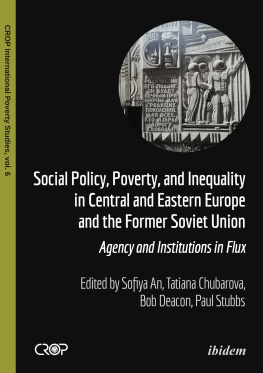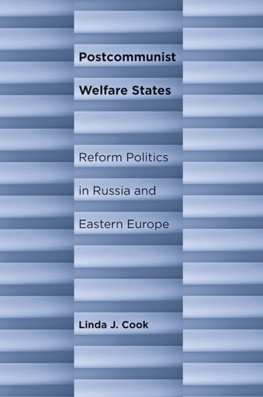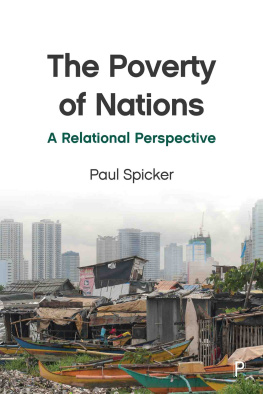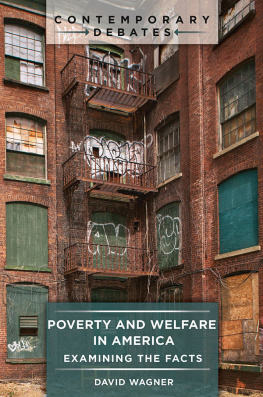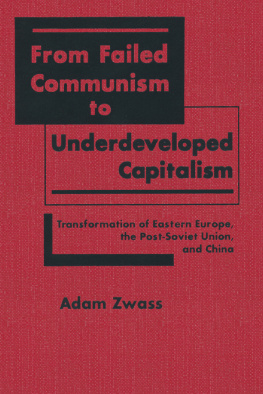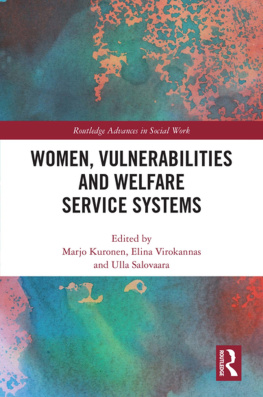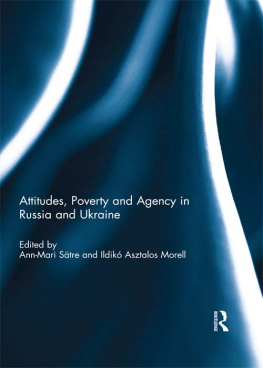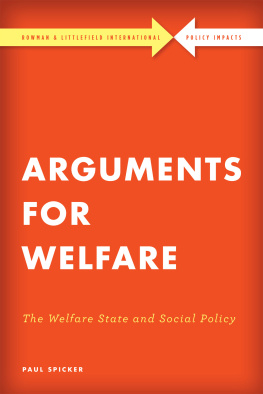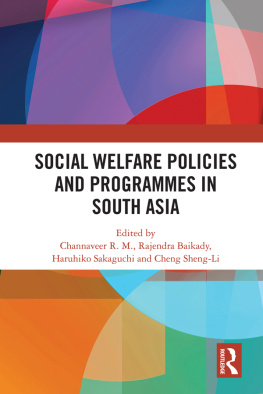SOCIAL POLICY, POVERTY, AND INEQUALITY IN CENTRAL AND EASTERN EUROPE AND THE FORMER SOVIET UNION
Sofiya An, Tatiana Chubarova, Bob Deacon and Paul Stubbs (editors)
PREFACE
This book derives from a workshop of the same title organized by the Comparative Research Programme on Poverty (CROP) at the Norwegian University Center in St Petersburg, Russian Federation, in June 2017. The workshop provided an opportunity for a systematic stock-taking of recent and historical post-socialist social policy developments in an increasingly diverse world region. Authors from different disciplines address key aspects of social protection including health care, poverty reduction measures, active labor market policies, pension systems, and child welfare systems. Contributions range in focus from comparative studies of welfare arrangements in a number of countries, to micro-level studies of the lived experiences of welfare users and their everyday lives. Throughout, the importance of policies to combat growing poverty, inequality and social exclusion is a major theme, with a number of texts addressing the complex policy nexus emerging from the interactions between international and domestic actors.
The original idea for the workshop came from Bob Deacon, a distinguished social policy scholar whose work on social policy in Eastern Europe, from the 1980s to today, continues to inspire researchers around the world and from the region. Following a long battle with cancer, Bob sadly passed away on 1 October 2017, aged 73. He will be missed by all who are committed to social justice across the world. Bob's commitment to the workshop and to this book was inspirational. It was a privilege, as co-editors, to work with him on this project. We are sorry that he was not able to see the book published, but we hope that it represents another important part of the legacy that he leaves behind.
We also wish to thank all those at CROP who worked hard to ensure the success of the workshop and to see this book to publication, in particular Alberto Daniel Cimadamore, Charlotte Lillefjre-Tertns, and Maria Sollohub. Thanks to Stein Kuhnle for his hard work during the workshop. We thank all participants in the workshop and, particularly, all contributors, for their commitment to the project. From the publisher's side, Jakob Horstmann provided patient guidance throughout the process, for which we are extremely grateful. Comments at the proposal stage by Thomas Pogge and, at the full review stage, by an anonymous reviewer, were extremely helpful in preparing the volume for final publication. We dedicate the book to the memory of Bob Deacon.
Sofiya An, Tatiana Chubarova, and Paul Stubbs
Astana, Moscow and Zagreb
September 2018
CHAPTER 1
POVERTY, INEQUALITY AND WELL-BEING IN THE GLOBAL EAST: BRINGING THE SOCIAL BACK IN
Paul Stubbs, Sofiya An and Tatiana Chubarova
INTRODUCTION
More than a quarter of a century after the fall of the Berlin Wall, the collapse of the Soviet Union, and the beginning of the wars of the Yugoslav succession, this book takes stock of the diverse and divergent welfare trajectories of post-socialist countries across Central, Eastern and South Eastern Europe and the former Soviet Union. It traces the impacts, in terms of poverty, well-being and inequality, of over two decades of transformation, addressing both the legacy effects of socialist welfare systems and the installation of new social, political and economic structures and, in many cases, new independent nation-states. It addresses different phases both of reform and of approaches to welfare, paying particular attention to the economic and financial crisis of the late 2000s. The book examines the rescaling of welfare arrangements, the privileging of economic over social policies, and the financial, institutional and capacity constraints which, at times, have resulted in reforms being both ineffective and inequitable.
THE GLOBAL EAST
Thinking about social welfare policies in terms of a rich and powerful Global North and a poorer and less powerful Global South leaves out vast swathes of the world; a Global East has, in many ways, fallen between the cracks (Mller, 2017; 3). The end of communism in the Soviet Union and in Central and Eastern Europe, a result of a series of momentous events between 1989 and 1991, neither confirmed nor corresponded to Fukuyama's (1992) idea of the end of history. The countries which make up the zone of concern in this volume have been doubly marginalized, not rich or powerful enough to be part of the Global North, not poor or powerless enough to be part of the Global South. Their in-between status has fed a rather uninspiring transitology literature that, in seeking to grasp the enormity of the simultaneous transition to democracy and to market economy (Dobry, 2000; 51), has constantly charted and re-charted the supposed dilemmas, problems and challenges in the way, creating a stereotypical image of a region stuck in eternal transition towards an elusive modernity (Mller, 2017; 4).
Of course, the countries of the former Eastern bloc, the former Soviet Union, and the former Yugoslavia, are only one part of the Global East, a term often applied to include East Asia (cf. for example Shin et al., 2016). Apart from experiencing decades of varieties of communist or socialist rule, and sharing, in time if not always in terms of its characteristics, a dramatic transformation, countries which make up this part of the Global East may seem to have very little in common. In a sense, of course, all regions are politically constructed and subject to diverse and contested meanings (Solioz and Stubbs, 2012; 17). Moreover, the Global East as a whole is less legible than the Global South, more slippery and hard to categorize (Mller, 2017; 3). It seems not to fit the frame in which mainstream commentators think the global (ibid, 8), brought into academic scholarship only when hyphenated as the ex-, the post-, or the former- (ibid, 9). It now contains countries as different from each other as the Central European countries who have been EU member states since 2004 (with Slovenia in 25 th place and the Czech Republic in 28 th place in terms of UNDP's Human Development Index) and countries in Central Asia, including Kyrgyzstan and Tajikistan (respectively in 120 th and 129 th place on the same index).
At the same time, Mller makes a persuasive case for utilizing the concept of a Global East as a form of strategic essentialism (Spivak, 1988). It can serve as a kind of mobilization, a plea for voice, recognition, even emancipation, of very diverse entities united only in terms of their, greater or lesser, exclusion from dominant hegemonic practices. This seems to return the Global East to where it properly belongs, deeply entangled in global social relations, neither out of time and space nor exoticizable as a not quite fully developed Other (Mller, 2017; 9). This volume, and the chapters within it, contribute, then, to new knowledge production about and, in many cases, from, the Global East. Insofar as the book is comparative, it seeks to be so without a hidden referent (Suova-Salminen, no date; 17), usually that of Western Europe, seeking to avoid a hidden Eurocentrism essentializing supposedly binary oppositions between modern traditional, industrial agricultural, nation-state empire-state, developed backward, individualist collectivist, or new old (ibid.; 11). This book is, then, best seen as a work of translation allowing for multiple sites and forms of knowledge production and academic practices that are more able to elaborate the widely diverse social and epistemic practices that comparative research witnesses (Lendvai and Bainton, 2013; 115).

